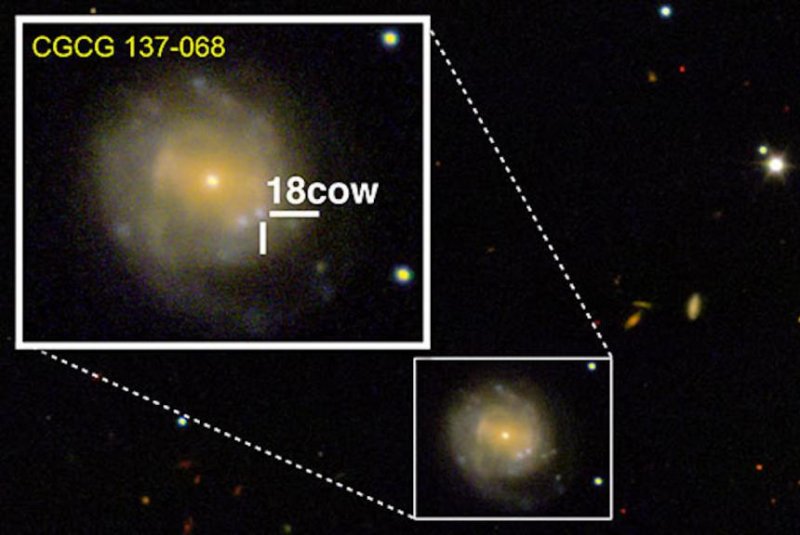The exploded star ejected relatively little gas and dust, allowing astronomers a clearer view of the collapsed stellar core. Photo by Northwestern University
Jan. 11 (UPI) -- Astronomers think a bright flash observed by telescopes last summer was created by a collapsing star.
Observations of the event by several telescopes suggest the faraway star, AT2018cow or "The Cow," collapsed and formed a black hole or neutron star. It's the first time scientists have directly observed such an event.
The Cow created an intense flash of light on June 17, catching the attention of astronomers around the world. Dozens of telescopes were trained on the exceptionally bright light, situated 200 million light-years away in the Hercules constellation.
"We thought it must be a supernova," Raffaella Margutti, researcher at Northwestern University, said in a news release. "But what we observed challenged our current notions of stellar death."
The star's exceptional luminosity was 10 to 100 times brighter than the typical supernova. The sudden brightening was also short-lived. The flare dissipated after just 16 days.
"We knew right away that this source went from inactive to peak luminosity within just a few days," Margutti said. "That was enough to get everybody excited because it was so unusual and, by astronomical standards, it was very close by."
Margutti and her colleagues analyzed hard X-rays -- a more powerful type of X-ray -- radio waves and gamma rays. By studying a wider array of spectral signatures, scientists were able to study the phenomenon for a longer period of time.
"Almost from the very start I realized that this transient was special," said Régis Cartier, who observed the mysterious flash using the Southern Astrophysical Research Telescope in Chile. "It was fast, blue and bright, different from any supernova seen before. I dropped everything else I was working on to focus on understanding this event."
Researchers were able to observe the event with unusual clarity. Typically, stellar explosions are quickly clouded by the gas and dust ejected during the collapse and rebound.
"The Cow had very little ejecta mass, which allowed us to view the central engine's radiation directly," Margutti said.
Scientists presented their observations of The Cow this week at the 233rd meeting of the American Astronomical Society in Seattle. The research will soon be published in the Astrophysical Journal.















